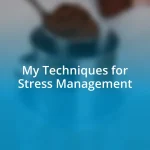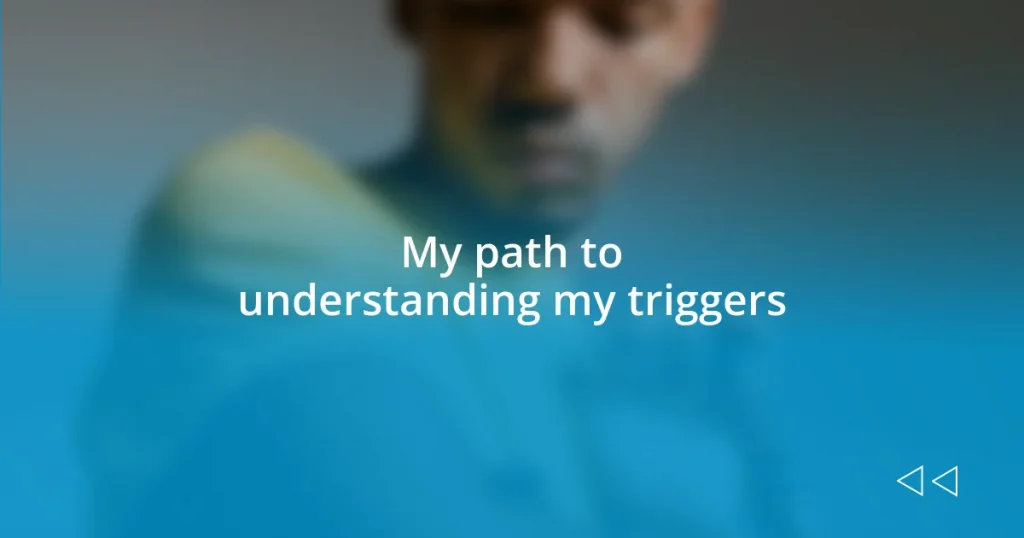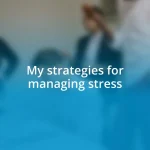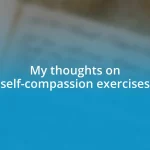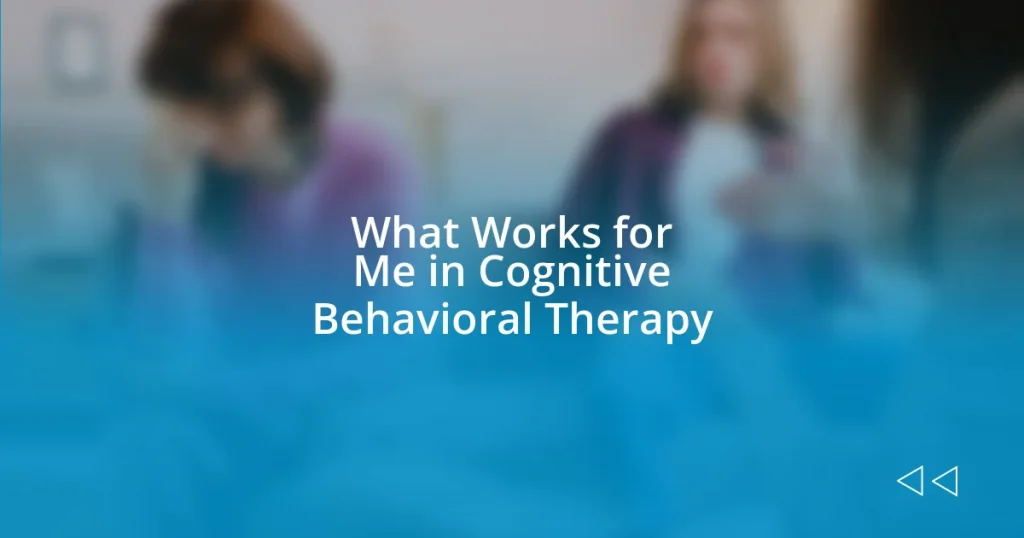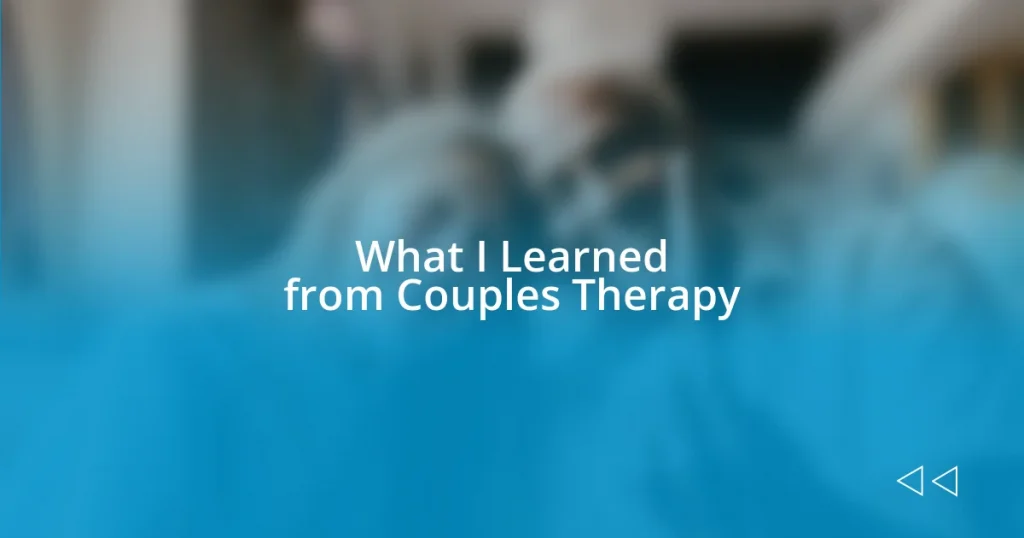Key takeaways:
- Identifying triggers and emotional responses enhances self-awareness and empathy, providing insights into personal reactions and their origins.
- Keeping a trigger journal helps unravel complex emotions, revealing patterns connected to past experiences and offering clarity for better emotional management.
- Practicing mindfulness, grounding techniques, and self-compassion are effective strategies for building resilience and coping with emotional challenges.
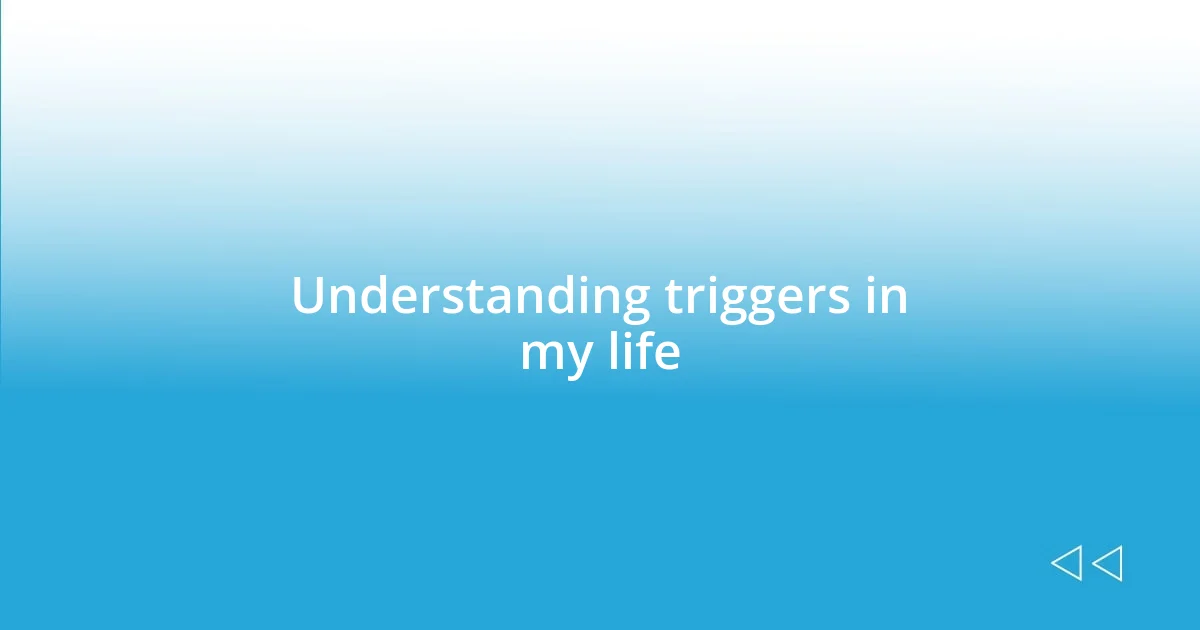
Understanding triggers in my life
Identifying triggers in my life has been an eye-opening experience. For instance, I noticed that certain sounds or smells can unexpectedly pull me into a whirlwind of anxiety. Have you ever felt that way—where a seemingly innocuous stimulus transports you back to a moment of distress?
I recall a time when the scent of freshly cut grass sent me spiraling into memories of an intense breakup. It was bizarre how something so simple could unlock such raw emotions. This made me realize that our environments often hold the keys to our emotional landscape, serving as constant reminders of past experiences.
Reflecting on these triggers has become a crucial part of my self-awareness journey. Each time I recognize a trigger, it feels like gaining a new tool for navigating my emotional world. It’s almost liberating, don’t you think? Understanding these nuances has taught me not only about myself but also deepens my empathy towards others who may face their own battles.
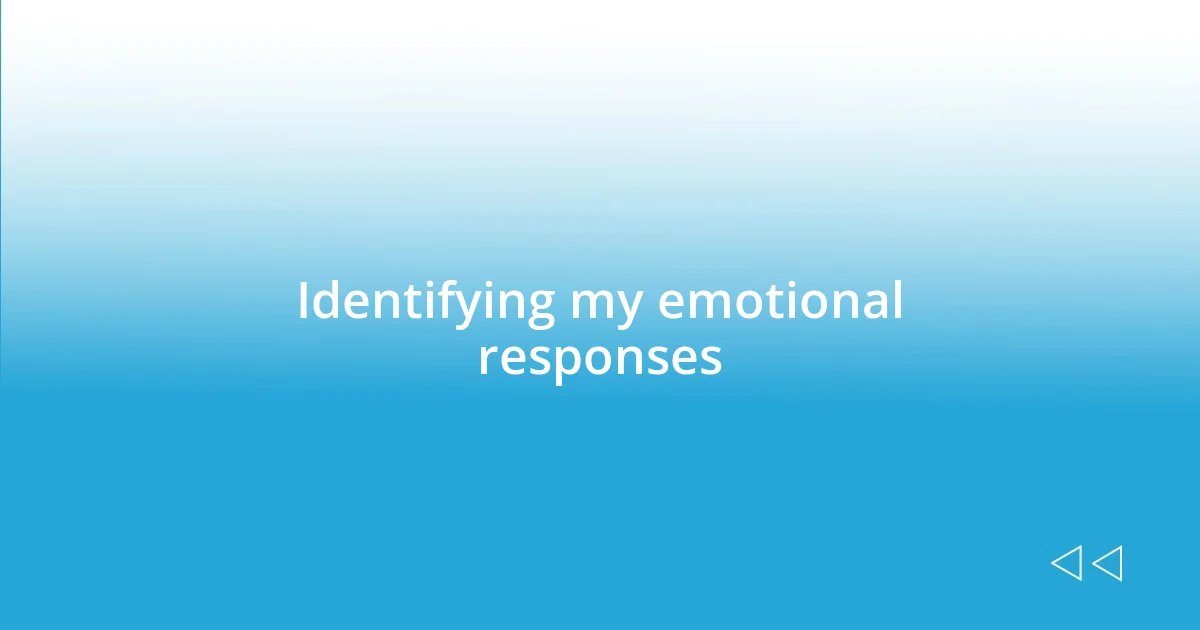
Identifying my emotional responses
Identifying my emotional responses has been quite the journey. Sometimes, I find myself reacting to situations in ways that leave me puzzled. For example, during a simple dinner with friends, I suddenly felt a wave of sadness wash over me when someone mentioned their recent travels. It took me some time to realize that this wasn’t about jealousy; rather, it was a reminder of my own unfulfilled dreams—I yearned to explore and connect with the world. This moment highlighted how my emotional responses can be tied to deeper desires and missed opportunities.
To really understand my emotional responses, I started paying attention to specific signs in my body and mind. I found it helpful to keep a journal to note down my reactions. Here are a few things I’d jot down:
- What triggered the response?
- How did my body react? (e.g., tense shoulders, racing heart)
- What thoughts crossed my mind?
- How did I feel immediately after the reaction?
- Was there an underlying pattern or past experience tied to this emotion?
This practice has made it easier to connect the dots and realize that my reactions often stem from a cocktail of emotions, memories, and expectations.
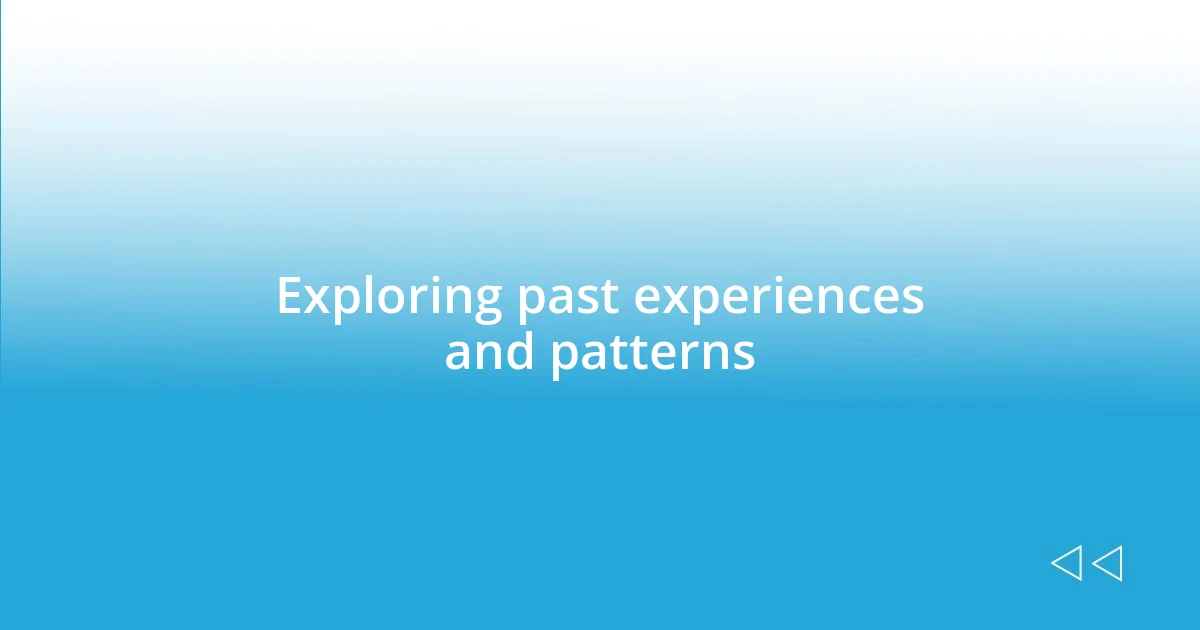
Exploring past experiences and patterns
Exploring my past experiences has revealed fascinating patterns in how I respond to different triggers. For example, I remember a family gathering where laughter filled the room, yet I felt strangely disconnected. It’s funny how a joyful setting can sometimes amplify feelings of isolation. This contrast made me realize that unresolved issues from my childhood, like feeling overlooked during family events, played a significant role in shaping my reactions.
As I continued to delve into my experiences, I noticed recurring themes in my emotional landscape. Each situation seemed to pull from a shared well of memories, where moments of joy were often followed by shadows of sadness. One particular incident stands out: when a friend achieved a significant milestone, my initial pride quickly morphed into self-doubt, echoing my own past disappointments. Understanding this pattern helped me to confront the fears of inadequacy that bubbled beneath the surface.
This exploration of my history has offered me insights that are both enlightening and sometimes painful. Each trigger is like a breadcrumb that leads me back to my past, illuminating why certain situations elicit strong reactions. In essence, it’s about mapping the intricate connections between my memories, emotions, and present-day experiences.
| Past Experience | Emotional Response |
|---|---|
| Family gatherings | Feelings of isolation |
| Friends’ achievements | Self-doubt and comparison |
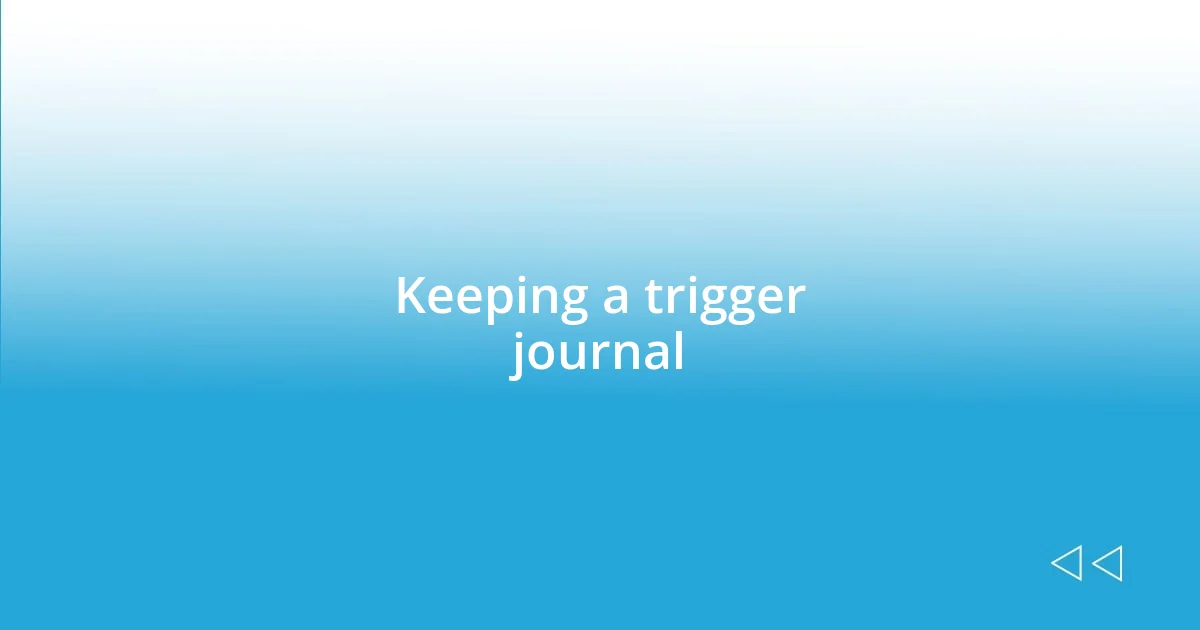
Keeping a trigger journal
Keeping a trigger journal has transformed the way I view my emotional landscape. I remember the first time I actively jotted down my feelings after a particularly stressful day at work. I found myself writing about my short temper when a colleague interrupted my stream of thoughts. By noting that moment, I understood it wasn’t just the interruption itself causing my reaction; it was the accumulating stress from the week. This awareness gave me a more profound understanding of how external events often amplify underlying tension.
Each time I document a trigger, I can feel myself unraveling layers of emotion. For instance, during a surprising confrontation with a friend, I found myself feeling anxious and defensive. When I reflected in my journal later, it struck me that this reaction echoed past arguments with family members where I felt unheard. I realized that my emotional responses weren’t random—they were deeply tied to old scars that warranted healing. Have you ever noticed how memories can shape your present emotions? It’s astonishing to see how a simple journal entry can shed light on those connections.
Moreover, I’ve noticed that consistency is key. Revisiting my entries after a few weeks brings clarity. Sometimes, it’s like piecing together a puzzle; only after observing patterns over time can I truly grasp the bigger picture. I urge anyone on this journey to not only write down their triggers but also to reflect on them regularly. How might your own reactions be echoing past experiences? That ongoing dialogue with yourself can lead to significant breakthroughs in understanding and managing your emotional responses.
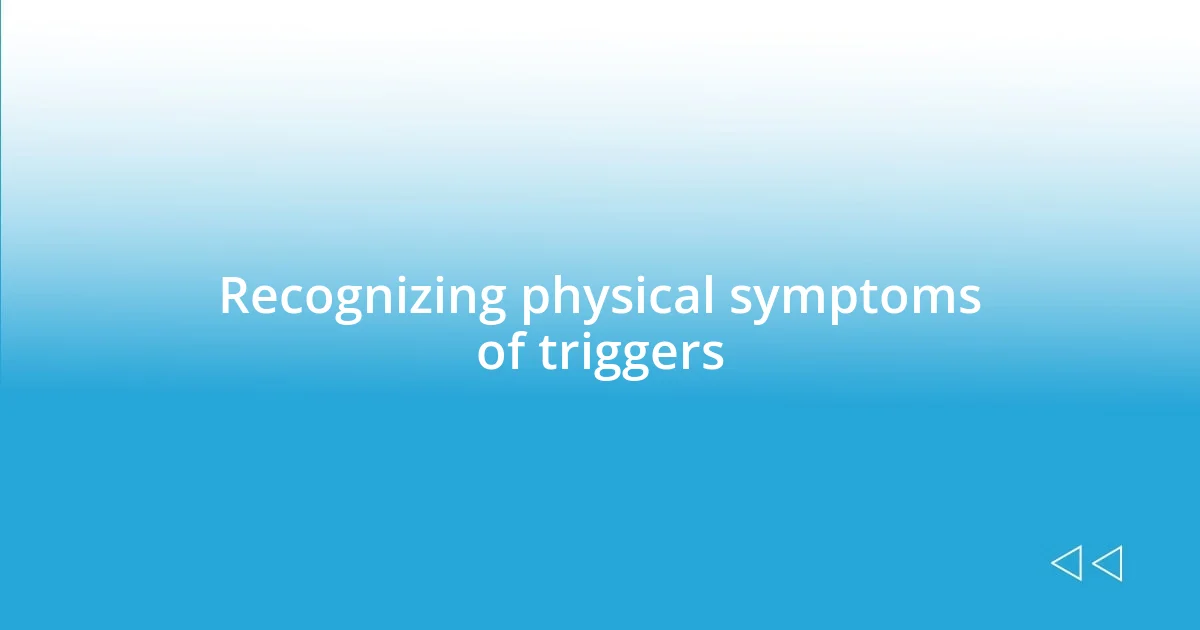
Recognizing physical symptoms of triggers
Recognizing the physical symptoms of triggers has become a crucial step in my journey. I still remember the first time I noticed my heart racing in a crowded space. It was puzzling at first; I couldn’t figure out why my body reacted so intensely. Reflecting on that moment revealed that it wasn’t just the number of people around me, but rather the echoes of feeling overwhelmed and ignored in similar settings from my past. Isn’t it fascinating how our bodies remember even when our minds forget?
There are other telltale signs that I’ve come to recognize too. For instance, I often find myself clenching my jaw whenever I’m confronted with something that makes me anxious. This physical reaction might seem subtle, but over time, it has become a clear signal for me to pause and reflect. It’s like my body is trying to communicate a message my mind might not be ready to hear yet. Have you ever felt that tightness in your chest during stressful moments? Recognizing it has been a game-changer for understanding when I might be triggered.
Now, I also pay attention to shifts in my breathing patterns. During a recent heated discussion with a friend, I noticed that my breaths became shallow. At that moment, it dawned on me that my body was responding long before my mind caught up. This awareness not only helps me identify my triggers but also gives me the chance to practice grounding techniques before I respond. How incredible it is that our bodies can guide us toward better emotional health if we only take the time to listen!
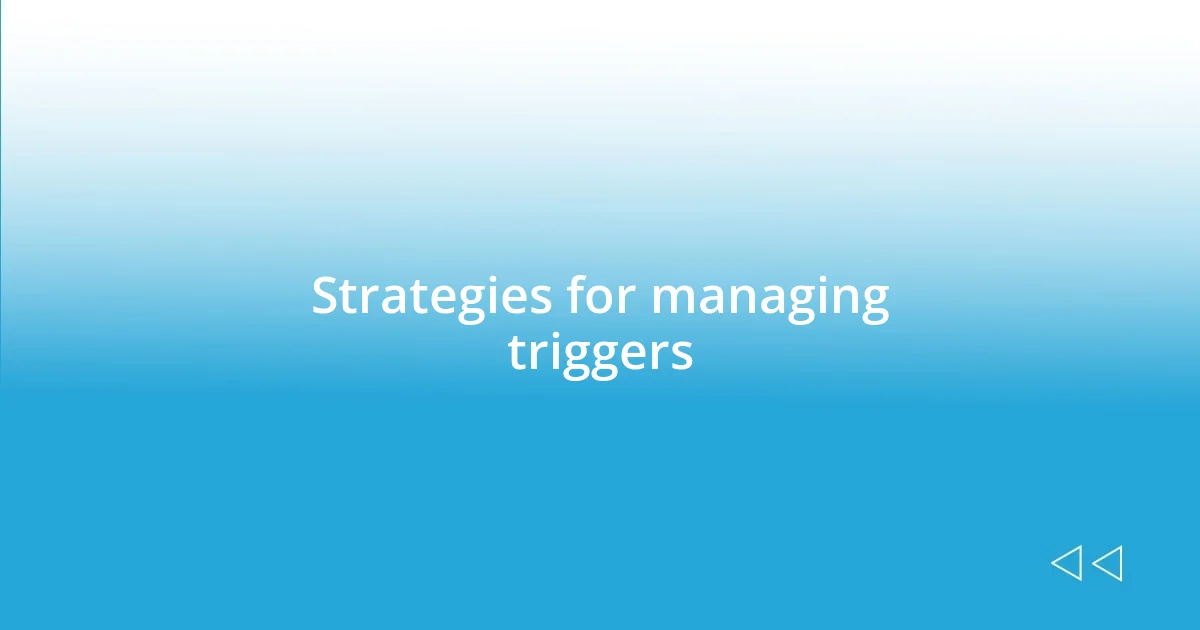
Strategies for managing triggers
One effective strategy I’ve embraced is mindfulness meditation. I remember sitting quietly for the first time, trying to focus on my breath. At first, my mind raced, inundated with thoughts about my day. But as I persisted, I learned to observe those thoughts without judgment, which helped me recognize when I was becoming triggered. Have you ever experienced that moment of clarity when you finally understand a rising emotion? Mindfulness allows me to step back and regain control, rather than reacting impulsively.
Another helpful tactic has been developing a list of grounding techniques that work for me. I recall a day when I felt overwhelmed by deadlines and noise—my usual tricks of deep breathing weren’t cutting it. It was in that moment I reached for a warm cup of tea and focused on the sensation of the warmth spreading through my hands. It was a simple shift, but it grounded me and turned the chaotic energy into calm. What small things can you incorporate into your routine that might help you reshape overwhelming moments? You might be surprised at how a few comforting habits can help reframe your responses.
Engaging in physical activities like yoga or even short walks has also made a significant difference. There was a time when tension and stress would build up to a point where I felt like a pressure cooker. By integrating yoga into my routine, I found that the deep stretches helped release pent-up emotions. The mind-body connection can’t be overstated, can it? Moving my body not only alleviates physical tension but also gives rise to emotional clarity, reminding me to shift my perspective before reacting.
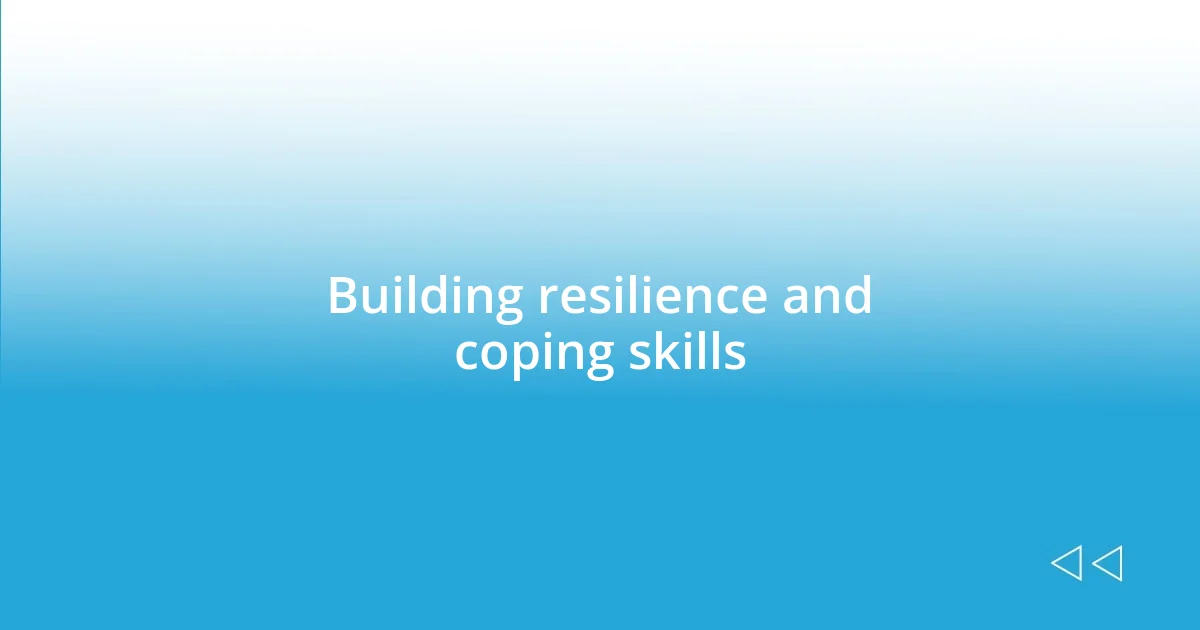
Building resilience and coping skills
Building resilience often starts with recognizing what makes us feel vulnerable. I remember a challenging period when I felt overwhelmed by work and personal responsibilities. Instead of letting the stress snowball, I leaned into journaling as a coping mechanism. Each night, I’d jot down one thing that went well and another that bothered me. This simple act not only lightened my emotional load but also helped me identify patterns in my feelings. Have you ever tried writing your thoughts down to find clarity? It can truly be a powerful tool in fostering resilience.
Developing coping skills takes practice, and I’ve found that surrounding myself with supportive people makes a world of difference. There was a time when I faced a particularly tough decision, and rather than tackling it alone, I reached out to a close friend. As we talked through my feelings, I felt a load lift off my shoulders. It was a reminder that vulnerability can lead to growth and connection. Finding your tribe—those who uplift and challenge you—can create a strong foundation for resilience, don’t you think?
Another way I’ve built my resilience is by embracing the concept of self-compassion. I distinctly recall a day when I made a misstep at work and felt like a complete failure. Instead of succumbing to self-criticism, I allowed myself some grace, reminding myself that everyone has off days. By treating myself as I would a dear friend—encouraging and understanding—I found it easier to bounce back. How often do we forget to be kind to ourselves in tough moments? Realizing that failure doesn’t define me has been liberating, fostering a resilience that allows me to embrace the ups and downs of life with open arms.









